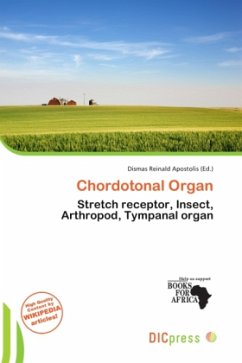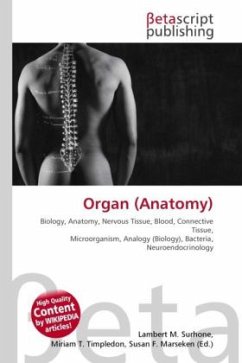Please note that the content of this book primarily consists of articles available from Wikipedia or other free sources online. Chordotonal organs are stretch receptor organs in insects and other arthropods They are used to detect the position of the body segments and appendages, or, in tympanal organs, the vibrations caused by sounds. An example for hearing is the Johnston's organ at the base of the antennae. Sound waves deflect hairs on the antennae which causes stretching on the cuticle of the Johnston's organ. This stretching is detected by underlying scolopidia.A scolopidia (historically scolopophore) is the most fundamental unit of a mechanoreceptor organs in insects. It is a composition of three cells, a scolopale cap cell which caps the scolopale cell, and a bipolar sensory nerve cell. Scolopidia are sensitive to things like sound (vibrations of the air) or substrate vibrations (feeling vibrations on a leaf, for instance) depending on the structure of the overall sense organ in which they reside.
Bitte wählen Sie Ihr Anliegen aus.
Rechnungen
Retourenschein anfordern
Bestellstatus
Storno








